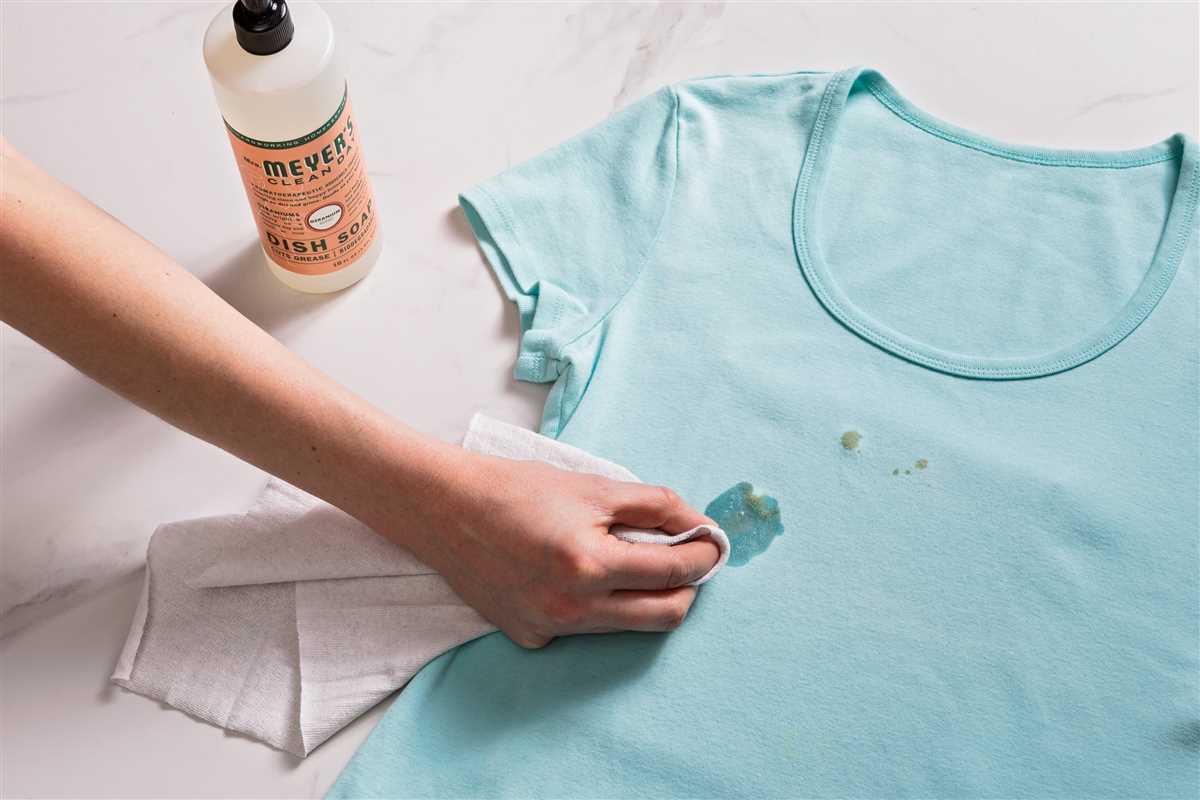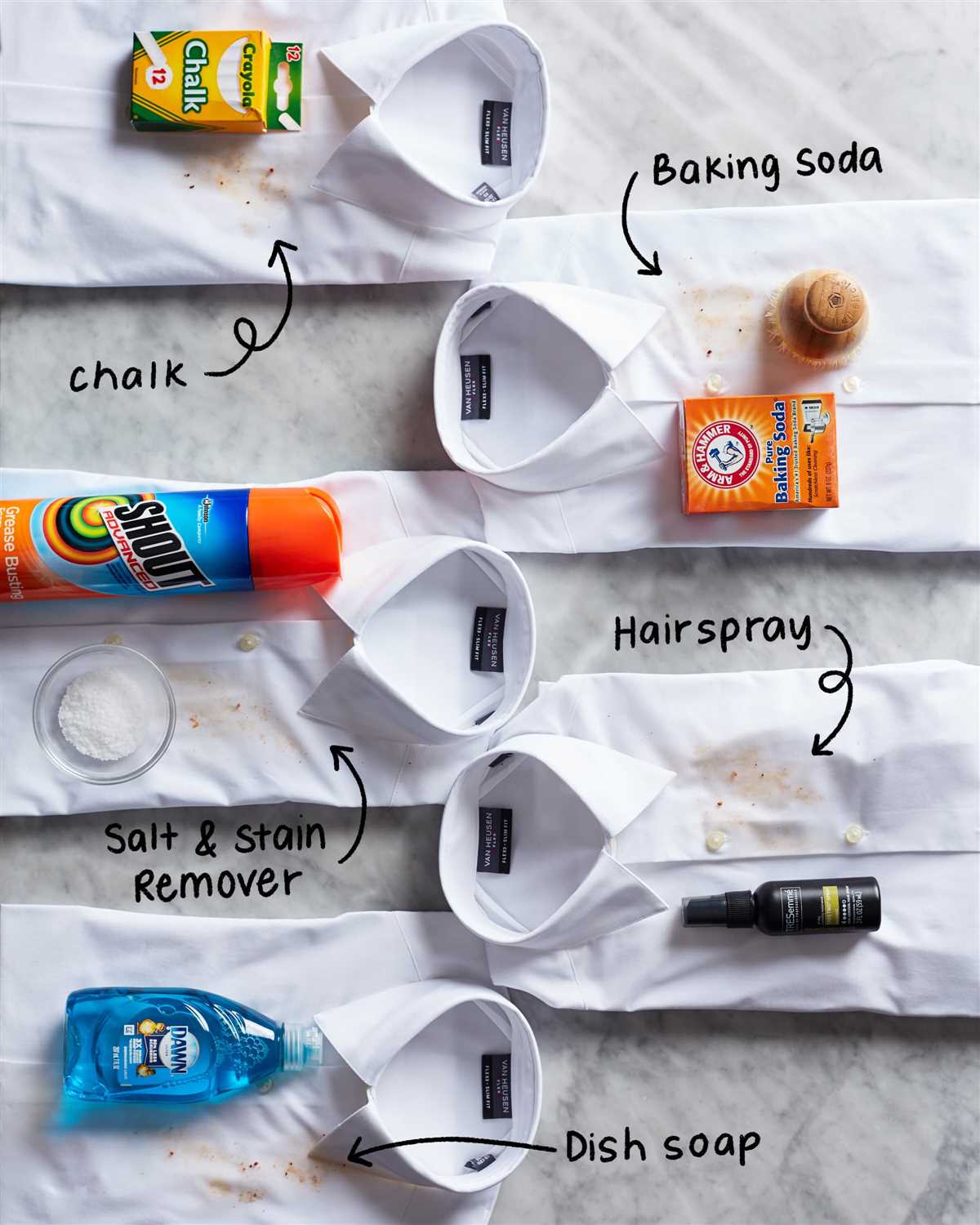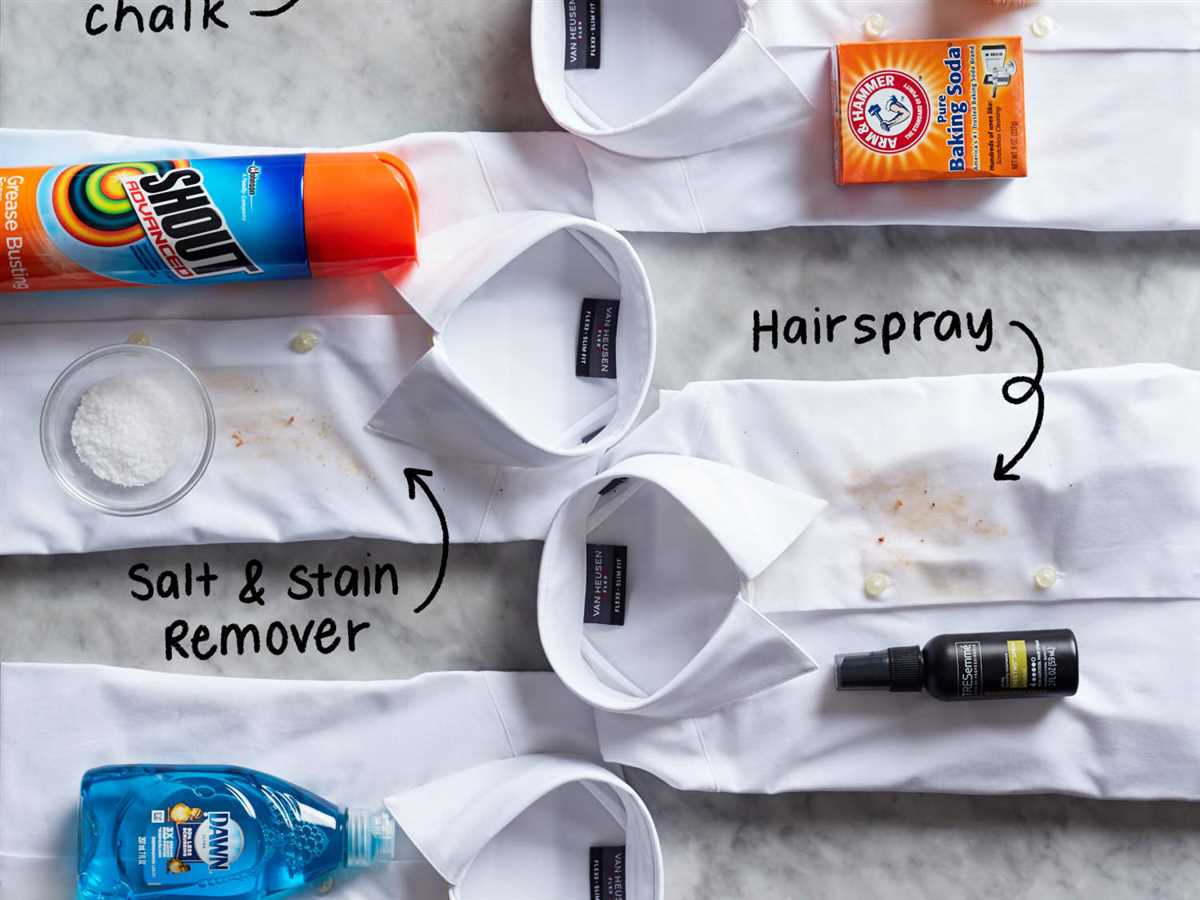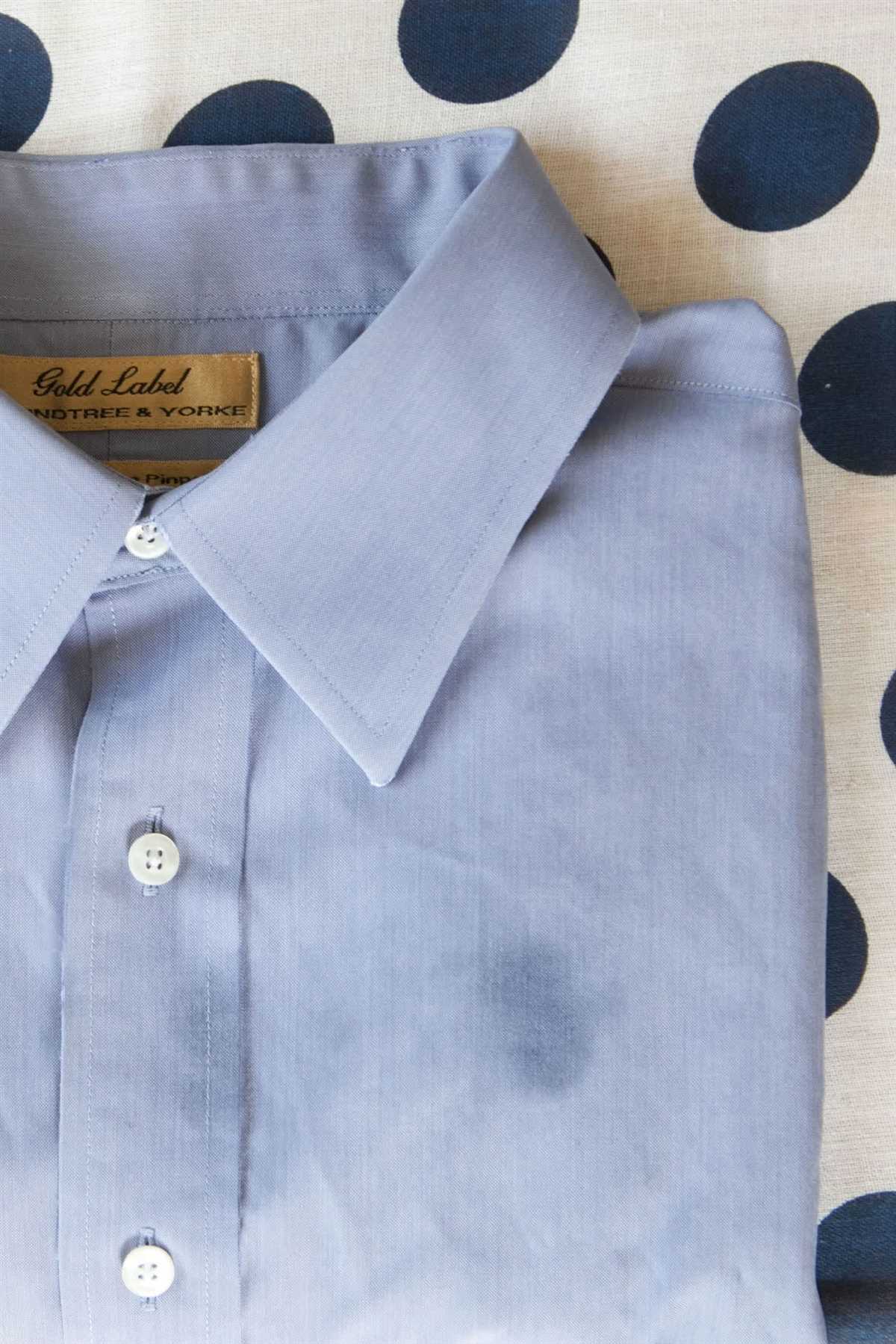


Grease and oil stains can be some of the most stubborn and difficult stains to remove from clothes. Whether you’ve accidentally spilled oil on your favorite shirt or got grease on your pants while cooking, it can be frustrating to try and get rid of these stains.
Fortunately, there are a few tips and tricks that can help you effectively remove grease and oil stains from your clothes. One important thing to remember is to act quickly – the longer you wait, the harder it will be to remove the stain. So, without further ado, here are some top tips for tackling those stubborn grease and oil stains.
1. Absorb the Excess
The first step in removing a grease or oil stain is to absorb any excess grease. Carefully blot the stain with a clean cloth or paper towel to remove as much of the grease as possible. Avoid rubbing the stain, as this can cause it to spread and set into the fabric.
Pro tip: If the stain is still wet, sprinkle some cornstarch or baking soda on it to help absorb the grease before blotting.
2. Pre-treat the Stain
Once you’ve absorbed the excess grease, it’s time to pre-treat the stain. Use a pre-treatment product specifically designed for grease and oil stains, or create your own solution using dish soap or laundry detergent. Apply the pre-treatment to the stain and let it sit for a few minutes to penetrate the fabric.
Pro tip: For tough stains, you can also try applying a paste made of equal parts baking soda and water. Rub the paste onto the stain and let it sit for at least 30 minutes before washing.
3. Wash the garment
After pre-treating the stain, it’s time to wash the garment as you normally would. Check the care label on the clothing item to ensure it can be machine washed, and use the appropriate temperature setting. If the garment is delicate or the stain is particularly stubborn, you may want to consider hand washing.
Pro tip: If the stain is still visible after washing, avoid putting the garment in the dryer, as the heat can set the stain. Instead, air dry the clothing and repeat the pre-treatment and washing steps if necessary.
Remember, every stain is unique, and different fabrics may require different methods of stain removal. It’s important to always check the care label on your clothing and test any pre-treatment products or homemade solutions on a small, inconspicuous area before applying them to the stain. With a little patience and the right techniques, you can successfully remove even the toughest grease and oil stains from your clothes!
Preparing the Stained Clothes

Before attempting to remove the grease or oil stain from your clothes, it’s important to properly prepare them for the stain removal process. Follow these steps to ensure the best results:
- Act quickly: The sooner you start treating the stain, the better chance you have at completely removing it. Don’t let the stain sit for too long, as it can set and become more difficult to remove.
- Check the care label: Before applying any stain remover or detergent, check the care label on your clothes to make sure you’re using the appropriate method for that fabric.
- Blot the stain: If the stain is still wet, use a clean cloth or paper towel to blot away as much of the excess grease or oil as possible. Be careful not to rub the stain, as this can push the oil deeper into the fabric fibers.
- Pre-treat the stain: Apply a stain remover or a small amount of liquid detergent directly onto the stained area. Gently rub the stain remover into the fabric with your fingers or a soft-bristled brush to help loosen the grease or oil.
- Let it sit: Allow the stain remover or detergent to sit on the stain for at least 5-10 minutes to give it time to break down the grease or oil.
By following these steps and properly preparing your stained clothes, you’ll be ready to move on to the next step of removing the grease or oil stain.
Gathering the Necessary Supplies
Before you begin removing grease and oil stains from your clothes, it’s important to gather the necessary supplies. Having the right tools and materials on hand will make the stain removal process easier and more effective. Here are some essential items you’ll need:
- Dish soap: Dish soap is a versatile cleaner that works well on grease and oil stains. Look for a mild dish soap that doesn’t contain any dyes or fragrances.
- White vinegar: White vinegar is another effective stain remover for grease and oil stains. It can help break down the oils and remove any residue left behind.
- Stain remover: Consider using a commercial stain remover specifically designed for grease and oil stains. Look for products that contain enzymes or solvents, as they can be particularly effective.
- Old toothbrush: An old toothbrush can be handy for gently scrubbing the stained area and working the cleaning solution into the fabric.
- Clean white cloths or paper towels: These will be used to blot and absorb any excess grease or oil before and after treatment.
- Plastic scraper or spoon: If the stain has hardened, you may need a plastic scraper or spoon to gently lift off any excess residue before treating the stain.
- Water: You’ll need water for rinsing and diluting the cleaning solutions.
Having these supplies ready and easily accessible will save you time and ensure you’re prepared to tackle grease and oil stains on your clothes. Now that you have all your supplies, let’s move on to the stain removal process.
Checking the Fabric Care Labels
Before attempting to remove a grease or oil stain from clothes, it is important to check the fabric care labels on the garment. These labels provide important information on how to properly care for the fabric and can help determine the best method for removing stains. Here are some things to look for when checking fabric care labels:
- Washing Instructions: Look for symbols or text indicating how the garment should be washed. Some fabrics may require special care, such as hand washing or dry cleaning, which can affect how stains should be treated.
- Temperature Guidelines: Some fabrics have specific temperature guidelines for washing and ironing. Using the wrong temperature when treating a stain can cause further damage to the fabric.
- Bleach Instructions: Not all fabrics can be treated with bleach. Check the fabric care label to see if bleach is safe to use on the garment, as using bleach on the wrong fabric can result in discoloration or damage.
- Drying Instructions: The fabric care label may indicate specific instructions for drying the garment. Some fabrics may need to be air-dried or laid flat to dry, while others can be tumble dried. Following the correct drying instructions can help prevent further damage.
By checking the fabric care labels before attempting to remove a grease or oil stain, you can ensure that you are using the appropriate methods and products for the specific fabric. This can help prevent damage to the garment and increase the chances of successfully removing the stain.
Removing Grease Stains

Grease stains can be tough to remove from clothes, but with the right techniques and products, you can get rid of them effectively. Here are some top tips:
- Act quickly: It’s important to treat grease stains as soon as possible. The longer they sit, the harder they are to remove.
- Blot the stain: Use a clean cloth or paper towel to blot the grease stain. Do not rub, as it can spread the grease and make the stain worse.
- Pre-treat the stain: Before washing the garment, pre-treat the grease stain. Apply a small amount of dish soap, laundry detergent, or a specialized stain remover directly to the stain.
- Scrub gently: Use a soft brush or toothbrush to gently scrub the stain. Be careful not to damage the fabric.
For more stubborn grease stains, here are additional methods you can try:
- Use baking soda: Make a paste of baking soda and water and apply it to the stain. Let it sit for 30 minutes, then rinse and launder as usual.
- Apply dish soap: Cover the stain with dish soap and let it sit for a few minutes. Rinse with warm water and wash as usual.
If the grease stain persists, you might consider using a commercial stain remover or taking the garment to a professional cleaner. Always read the care label on the clothing before using any products or methods.
| Tips to Remember | |
|---|---|
| 1. | Act quickly to treat grease stains. |
| 2. | Blot the stain, do not rub. |
| 3. | Pre-treat with dish soap, laundry detergent, or stain remover. |
| 4. | Gently scrub the stain with a soft brush or toothbrush. |
| 5. | Try using baking soda or dish soap for stubborn stains. |
| 6. | Consider a commercial stain remover or professional cleaner if needed. |
Applying Dish Soap
- Start by laying the stained clothing item on a clean towel or flat surface.
- If the stain is fresh, use a spoon or blunt knife to remove any excess grease or oil from the fabric.
- Next, wet the stained area with cold water. Avoid using hot water as it can set the stain.
- Apply a small amount of dish soap directly onto the stain.
- Gently rub the dish soap into the stain using your fingers or a soft brush. Be sure to cover the entire stained area.
- Let the dish soap sit on the stain for about 10 minutes. This will help break down the grease or oil.
- After the soaking time, rinse the stained area under cold water. Make sure to rinse thoroughly to remove all the dish soap.
- Check the stained area to see if the grease or oil stain has been removed.
- If the stain is still visible, repeat the dish soap application and rinsing process until the stain is gone.
- Once the stain is completely removed, wash the clothing item as usual, following the care instructions on the garment’s tag.
- Inspect the clothing item after washing to ensure the stain is fully removed before drying.
Using Baking Soda and Water Paste

To remove grease and oil stains from clothes, you can create a homemade paste using baking soda and water. This method is effective for lifting the stains and deodorizing the fabric.
Step-by-Step Instructions:

- Start by mixing baking soda with water in a small bowl to create a paste. The consistency should be similar to that of toothpaste.
- Apply the paste directly to the stained area of the fabric. Use a spoon or your fingers to spread it evenly and cover the entire stain.
- Gently massage the paste into the fabric using circular motions. This will help the baking soda penetrate the fibers and lift the grease or oil stains.
- Let the paste sit on the stained area for about 30 minutes to an hour. This will give the baking soda enough time to work its magic.
- After the designated time has passed, rinse the fabric under cold water to remove the paste. Make sure to thoroughly rinse out all the baking soda.
- If the stain persists, repeat the process until the stain is completely gone. You can also try adding a bit of vinegar to the paste for extra stain-fighting power.
- Once the stain is removed, wash the fabric as you normally would. Check the care label for the appropriate washing instructions.
Tips and Tricks:
- Always act quickly when dealing with grease or oil stains. The longer the stain sits, the more difficult it will be to remove.
- Avoid using hot water on grease or oil stains, as it can set the stain further into the fabric.
- If the fabric is delicate or requires dry cleaning only, it’s best to take it to a professional cleaner for stain removal.
- Baking soda is also effective at removing odor from clothes. If the stain leaves a lingering smell, sprinkle baking soda on the fabric and let it sit for a few hours before washing.
Using a baking soda and water paste is a simple yet effective method for removing grease and oil stains from clothes. Give it a try the next time you face a stubborn stain!
Getting Rid of Oil Stains
Oil stains can be stubborn and difficult to remove from clothing. However, with the right techniques and products, you can effectively get rid of oil stains and restore your garments to their original condition. Here are some top tips to help you remove oil stains:
1. Act quickly
As soon as you notice an oil stain on your clothing, it is important to take immediate action. Blot the stain with a clean cloth or paper towel to remove any excess grease or oil. Do not rub the stain, as this can cause it to spread and penetrate the fabric further.
2. Dab with a pre-treatment solution
Apply a pre-treatment solution to the oil stain. There are many commercial products available, or you can create your own by mixing dishwashing liquid or laundry detergent with warm water. Dab the solution onto the stain and let it sit for a few minutes to penetrate the fabric.
3. Wash with hot water
After treating the oil stain, wash the garment in hot water. Hot water helps to break down and dissolve the oil, making it easier to remove. Check the care label on your clothing to ensure it can be washed in hot water without causing any damage.
4. Use a stain remover
If the oil stain persists, apply a stain remover directly to the affected area. Gently rub the stain remover into the fabric, using a soft brush or your fingers. Let the stain remover sit for the recommended amount of time, according to the product instructions.
5. Repeat if necessary

If the oil stain is still visible after washing, repeat the above steps until the stain is completely removed. Some oil stains may require multiple treatments to fully disappear.
- Remember to always test any cleaning solution on a small, inconspicuous area of the garment first to ensure it does not cause any damage or discoloration.
- Avoid using heat, such as a dryer or iron, on the oil stain before it is completely removed. Heat can set the stain, making it more difficult to remove.
- If the oil stain is on a delicate or dry-clean-only garment, it is best to take it to a professional cleaner for treatment.
By following these tips and acting quickly, you can successfully remove oil stains from your clothes and keep them looking fresh and clean.
FAQ
What are some effective ways to remove grease and oil stains from clothes?
There are several effective ways to remove grease and oil stains from clothes. One option is to apply a small amount of dish soap directly to the stain, rub it in with a cloth or brush, and then rinse with hot water. Another option is to sprinkle baking soda or cornstarch on the stain to absorb the oil, and then brush off the powder before laundering the garment. You can also try using a stain remover spray or pre-treating the stain with laundry detergent before washing the item.
Can I use alcohol to remove grease and oil stains from my clothes?
Yes, alcohol can be effective in removing grease and oil stains from clothes. You can dab a small amount of rubbing alcohol onto the stain using a cloth or sponge, and then blot the area to lift the grease. After that, you can wash the garment as usual. However, it’s important to spot test the alcohol on a small, inconspicuous area of the fabric first to ensure that it doesn’t cause any damage or discoloration.
Are there any natural methods for removing grease and oil stains from clothes?
Yes, there are several natural methods for removing grease and oil stains from clothes. One option is to sprinkle salt or baking soda directly onto the stain, let it sit for a few minutes to absorb the oil, and then brush it off before washing the garment. Another natural method is to mix equal parts vinegar and water, apply it to the stain, and then blot it with a cloth. You can also try using dish soap or liquid laundry detergent to pre-treat the stain.
What should I do if I accidentally spill grease or oil on my clothes?
If you accidentally spill grease or oil on your clothes, it’s important to act quickly to prevent the stain from setting. First, blot the stain with a clean cloth or paper towel to remove any excess grease. Then, apply a small amount of dish soap or liquid laundry detergent to the stain and rub it in gently. Let the soap sit for a few minutes to break down the grease, and then rinse the garment with hot water. If the stain persists, you may need to repeat the process or try using a stain remover spray.
Is it possible to remove old grease and oil stains from clothes?
Yes, it is possible to remove old grease and oil stains from clothes, but it may require a bit more effort. One option is to apply a generous amount of laundry detergent or stain remover directly to the stain, and then use a soft brush to scrub the area. Let the detergent sit on the stain for at least 30 minutes or overnight before washing the garment. You can also try using a mixture of equal parts white vinegar and water to pre-treat the stain before laundering. It’s important to note that old stains may be more stubborn and may require multiple treatments to fully remove.












